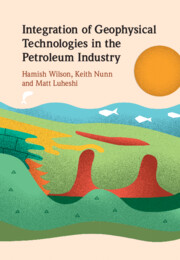Book contents
- Integration of Geophysical Technologies in the Petroleum Industry
- Integration of Geophysical Technologies in the Petroleum Industry
- Copyright page
- Contents
- Contributors
- 1 Introduction
- 2 The Hydrocarbon Exploration Process
- 3 Crustal Seismic Studies
- 4 Gravity and Magnetics
- 5 Full Tensor Gradiometry
- 6 Marine Electromagnetic Methods
- 7 Ocean Bottom Marine Seismic Methods
- 8 Microseismic Technology
- 9 A Road Map for Subsurface De-risking
- Glossary
- Index
- References
8 - Microseismic Technology
Published online by Cambridge University Press: 25 November 2021
- Integration of Geophysical Technologies in the Petroleum Industry
- Integration of Geophysical Technologies in the Petroleum Industry
- Copyright page
- Contents
- Contributors
- 1 Introduction
- 2 The Hydrocarbon Exploration Process
- 3 Crustal Seismic Studies
- 4 Gravity and Magnetics
- 5 Full Tensor Gradiometry
- 6 Marine Electromagnetic Methods
- 7 Ocean Bottom Marine Seismic Methods
- 8 Microseismic Technology
- 9 A Road Map for Subsurface De-risking
- Glossary
- Index
- References
Summary
Microseismic monitoring, an extension of classical earthquake seismology, has found many applications in the resource industry. In particular, it has become an essential tool for observing the results of hydraulic fracturing on unconventional reservoirs, without which the reservoirs are not economic. Such monitoring allows for direct observation of the effectiveness of the well treatment, for the selection of improved treatment parameters, and contributes to the overall field development plan. Data from microseismic monitoring contributes to the understanding of the stimulated reservoir model, the drainage volume of individual wells, estimated production, production interference and the stress in the reservoir. This chapter presents an introduction to how these data are acquired, analysed and integrated with other data to affect a successful well completion and field development program.
Keywords
- Type
- Chapter
- Information
- Publisher: Cambridge University PressPrint publication year: 2021

